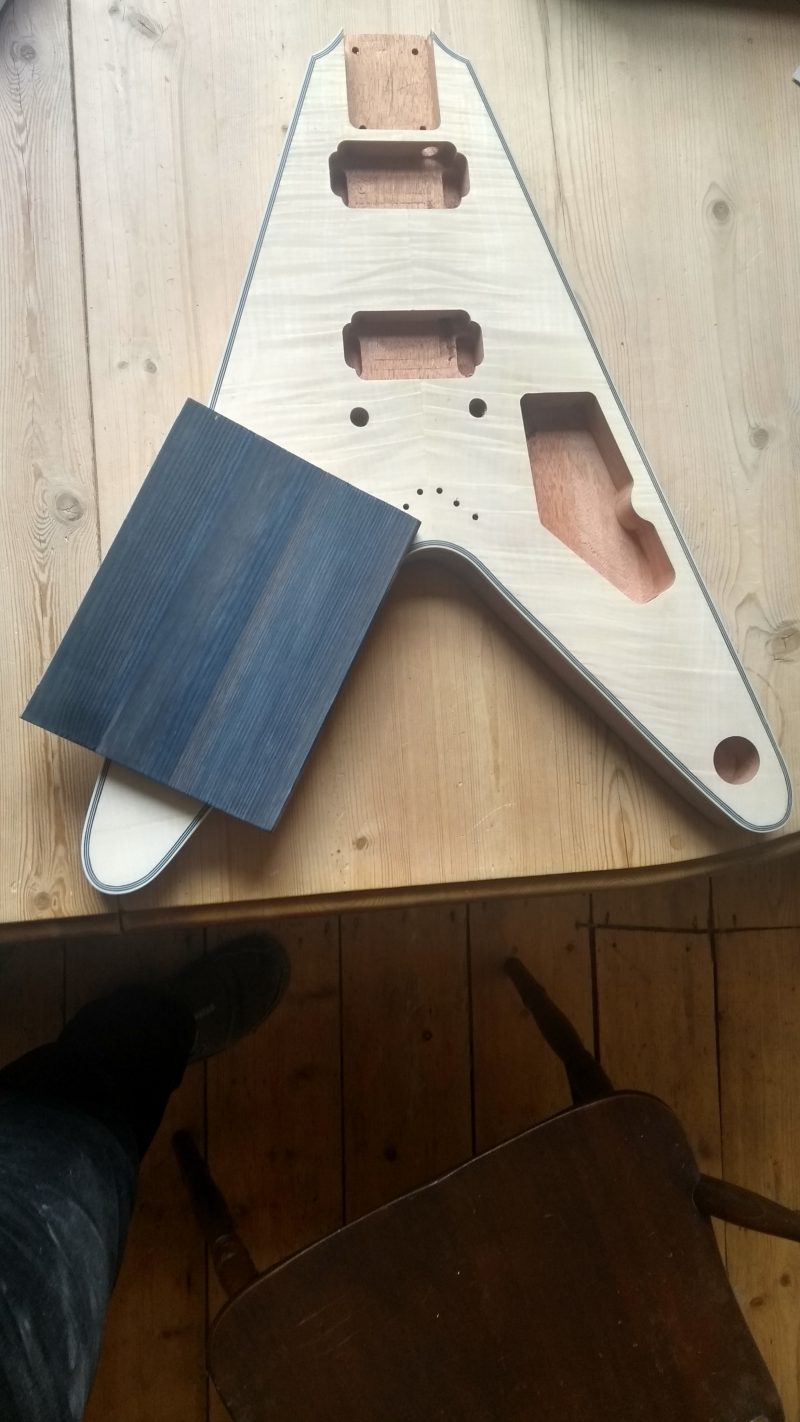It’s taken a long time but I’ve finally got around to starting my next guitar build. Carolyn bought me a flying-v-type kit from https://www.pitbullguitars.com/ with a book-matched veneer top so I’ve been trying to figure out how to finish it to do justice to the wood figuring.
I’ve spent a bizarre amount of time on YouTube watching videos from https://www.crimsonguitars.com/ about different wood-stain techniques.
What I decided to go with is an under-stain to emphasise the grain pattern. So with some stains from above mentioned Crimson I’ve been doing some stain tests on old cut-offs from putting up some shelves. What I’ve ended up with is this:

This is unfinished. With oil on top it’ll shine and it looks almost iridescent.
So with a last bit of sanding I think I’m finally ready to start on the guitar.























